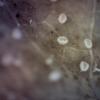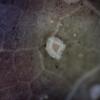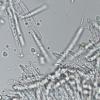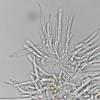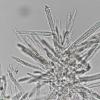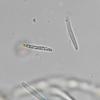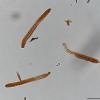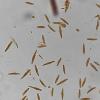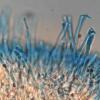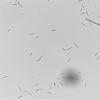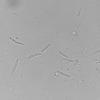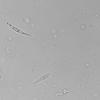
21-12-2025 09:32
Hello.A tiny ascomycete found embedded in wood in

21-12-2025 21:32
Pol DebaenstHello, Garden, Burgweg 19, Veurne, BelgiumOn 10/1

22-12-2025 23:38
Patrice TANCHAUDBonsoir, récolte sur un mur en pierre, apothéci

22-12-2025 00:47
Patrice TANCHAUDBonsoir, récolte à proximité du milieu dunaire

21-12-2025 21:40
Isabelle CharissouBonjour, j'aimerais connaitre les références de

20-12-2025 23:08
Patrice TANCHAUDBonsoir, récolte sur sol sablonneux dans l'arri�
Lachnaceae?
Guy Buddy,
08-05-2019 15:44
(8.4) 8.9 - 12.5 (14.1) × (1.5) 1.6 - 2.1 (2.2) µm
Q = (4.6) 4.9 - 6.3 (7.2) ; N = 20; Me = 10.5 × 1.9 µm ; Qe = 5.6
Hair measure:(56.6) 60 - 66.5 (68.7) × 3.5 - 4.8 (5.4) µm
Q = (11.8) 12.4 - 18 (18.3) ; N = 8; Me = 63.7 × 4.2 µm ; Qe = 15.7
Hans-Otto Baral,
08-05-2019 15:57

Re : Lachnaceae?
I am not sure if you mixed something here.
There are almost cylnidrocal spores (living in water) and strongly fusiform ones (in ?CB).
Together with the large spore size I suspect the latter to be Incrucipulum ciliare. But there the hairs are thick-walled and bear crystals, and the living spores would be multiguttulate.
Please, if you have it still fresh, look again in water for the large fusiform spores.
There are almost cylnidrocal spores (living in water) and strongly fusiform ones (in ?CB).
Together with the large spore size I suspect the latter to be Incrucipulum ciliare. But there the hairs are thick-walled and bear crystals, and the living spores would be multiguttulate.
Please, if you have it still fresh, look again in water for the large fusiform spores.
Guy Buddy,
08-05-2019 16:17
Hans-Otto Baral,
08-05-2019 16:27

Re : Lachnaceae?
So they are all eguttulate. What is the length of the scale in the spore photos?
Guy Buddy,
08-05-2019 16:41
Re : Lachnaceae?
Sorry, the bar is 20um
Hans-Otto Baral,
08-05-2019 17:36

Re : Lachnaceae?
Then you must divide your measurements /2. I measure 11-16 x1.8-2.2.
But I cannot recall s species like this, perhaps American.
But I cannot recall s species like this, perhaps American.
Guy Buddy,
08-05-2019 20:18
Re : Lachnaceae?
Hans, you are right. I measured from a 1000x photo while I was thinking it was 400x.
The correct spore measurement is:(8.4) 8.9 - 12.5 (14.1) × (1.5) 1.6 - 2.1 (2.2) µm
Q = (4.6) 4.9 - 6.3 (7.2) ; N = 20; Me = 10.5 × 1.9 µm ; Qe = 5.6
Thank you for acute observation and sharing your expertise!
The correct spore measurement is:(8.4) 8.9 - 12.5 (14.1) × (1.5) 1.6 - 2.1 (2.2) µm
Q = (4.6) 4.9 - 6.3 (7.2) ; N = 20; Me = 10.5 × 1.9 µm ; Qe = 5.6
Thank you for acute observation and sharing your expertise!
